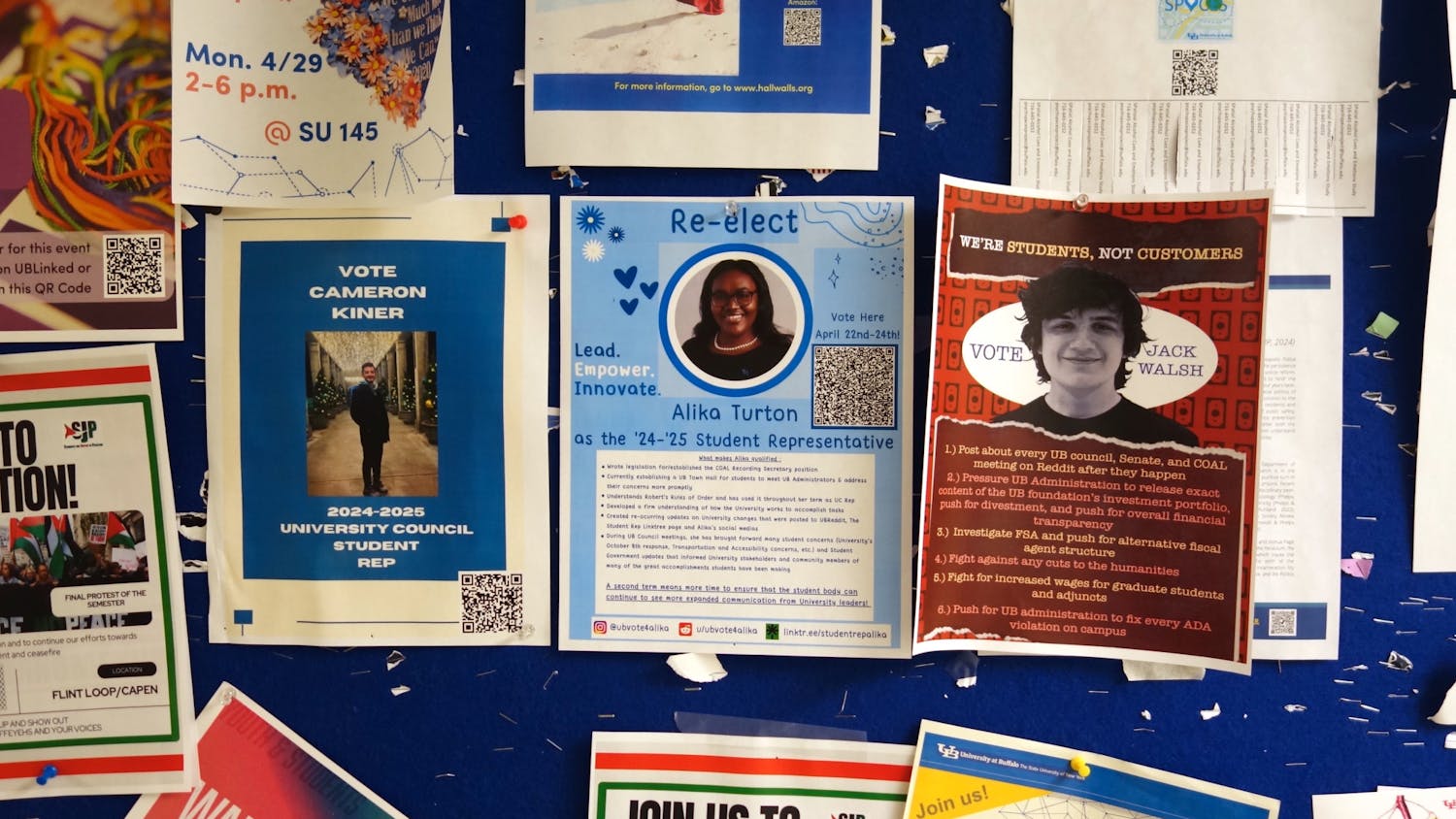UB data is showing that social distancing efforts are “flattening the curve” of COVID-19 transmission rates across Erie County, and will help new infections remain low as the state gradually reopens its economy on May 15.
UB hosted a virtual press briefing Thursday to discuss the findings of Erie County hospitals’ inpatient rates. The data, analyzed by UB’s COVID-19 Analytics Group -- a team of researchers creating informatic models to help Erie County and local hospitals -- reflects trends in the COVID-19 hospital census in Western New York.
Approximately 20 people attended the 12 p.m. zoom meeting, where Executive Director of UB’s Institute for Healthcare Informatics Peter Winkelstein and Erie County Commissioner of Health Gale Burstein discussed the project. The Erie County Department of Health and local hospital administrations have teamed up with researchers at UB’s Institute for Healthcare Informatics to make weekly revisions of the informatic models -- graphs of the relationship between local hospital inpatient rates and different degrees of social distancing -- projecting Erie County’s COVID-19 infection rates.
During the meeting, researchers stressed the importance of social-distancing long after the Centers for Disease Control and Prevention’s earliest recommended date of May 15, to avoid overloading New York’s healthcare workers. They also discussed how to enforce compliance with local and state regulations among community members and businesses.
Peter Winkelstein, executive director of UB’s Institute for Healthcare Informatics and professor at the Jacobs School of Medicine and Biomedical Sciences, said Erie County residents are generally compliant with social-distancing regulations.
“We dodged bullets because people in our county acted intelligently and quickly, so our hospital system is not in danger of being overwhelmed,” Winkelstein said.
Erie County Commissioner of Health Gale Burstein said community members are “essential” to Erie County’s fight against the coronavirus, and said it is important that people report businesses that aren’t complying with social distancing regulations.
“Just because the state is backing off doesn’t mean that we can back off,” Burstein said.
Burstein said social distancing will be “the new normal” and that certain practices like washing hands, calling off from work for illnesses and using your own utensils while eating will continue after the pandemic.
“Hopefully those norms will stick,” Burnstein said. We need to think about getting to a new normal where COVID-19 is a vaccine preventable disease like the flu.”
Burstein also hopes such practices will allow Erie County to keep hospitals below capacity as testing becomes more available and medications are developed.
Until then, Winkelstein said we must continue social distancing.
“At the rate we are going, we are not going to develop herd immunity for a long time. It probably won’t start to get better until we have the vaccine, in my opinion. We’ll be lucky to have the vaccine [by] next year.”
While health officials develop vaccines, medications and testing procedures, Erie County will continue tracing who afflicted residents come in contact with. For this, the county hires “contact tracers,” who reach out to those afflicted and encourage those who they came in contact with to test for the coronavirus and self-quarantine.
“We have a whole army of contact tracers. The number we put to work is dependent on the numbers [on cases we receive] from the New York State Department of Health. We follow up on every case. We receive the results of all those positive laboratory tests,” Burstein said.
Burstein says it’s essential that Erie County has access to enough testing equipment and continues temperature checking at doctor’s offices and hospitals to “break the chain of transmissions.”
“[Our contact tracers] are very skilled. They do disease investigations for other communicable diseases, [some of them] are nurses,” Burstein said.
Erie County’s contact tracing team works anywhere from 70 to over 100 cases a day. Tracers try to contact every new case within 24 hours.
Currently, Erie County officials believe informatic models are leading communities in the right direction to mitigate transmissions and limit deaths.
“We do not want to be in another New York City situation, Winkelstein said. “These are the kind of behavior changes we have to adopt if we are gonna mitigate the [curve] rising.”
The news desk can be reached at news@ubspectrum.com
Elizabeth "Liz" Napolitano is the senior news editor for The Spectrum. She's an optimistic pessimist who found her love for journalism in Ecuador. She likes late night walks and reading Twitter threads in their entirety.





